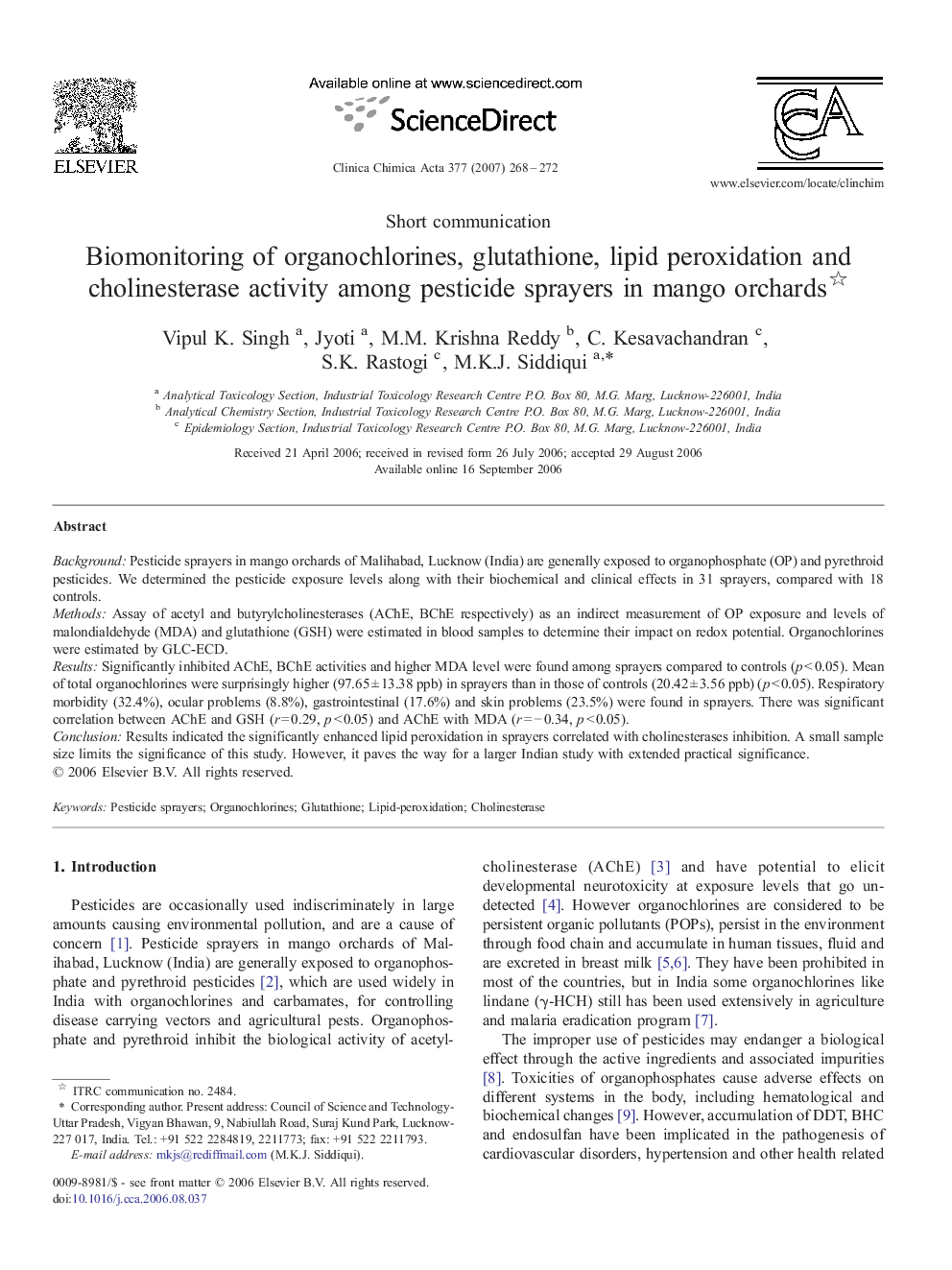| Article ID | Journal | Published Year | Pages | File Type |
|---|---|---|---|---|
| 1967715 | Clinica Chimica Acta | 2007 | 5 Pages |
BackgroundPesticide sprayers in mango orchards of Malihabad, Lucknow (India) are generally exposed to organophosphate (OP) and pyrethroid pesticides. We determined the pesticide exposure levels along with their biochemical and clinical effects in 31 sprayers, compared with 18 controls.MethodsAssay of acetyl and butyrylcholinesterases (AChE, BChE respectively) as an indirect measurement of OP exposure and levels of malondialdehyde (MDA) and glutathione (GSH) were estimated in blood samples to determine their impact on redox potential. Organochlorines were estimated by GLC-ECD.ResultsSignificantly inhibited AChE, BChE activities and higher MDA level were found among sprayers compared to controls (p < 0.05). Mean of total organochlorines were surprisingly higher (97.65 ± 13.38 ppb) in sprayers than in those of controls (20.42 ± 3.56 ppb) (p < 0.05). Respiratory morbidity (32.4%), ocular problems (8.8%), gastrointestinal (17.6%) and skin problems (23.5%) were found in sprayers. There was significant correlation between AChE and GSH (r = 0.29, p < 0.05) and AChE with MDA (r = − 0.34, p < 0.05).ConclusionResults indicated the significantly enhanced lipid peroxidation in sprayers correlated with cholinesterases inhibition. A small sample size limits the significance of this study. However, it paves the way for a larger Indian study with extended practical significance.
